Did you know that several places in Coastal Mississippi are significant in African American History? This Black History Month, we encourage you to celebrate the progress we've made as a society by visiting each location. In this article, we will uncover exhibits and other points of interest regarding the origin of local African American movements. Keep reading to see where your self-guided tour of paying homage will begin.
Historical Sites | Historical Markers
Also, download our 2-Day Group Itinerary.
Historical Sites
Biloxi Visitors Center & Lighthouse (Biloxi)
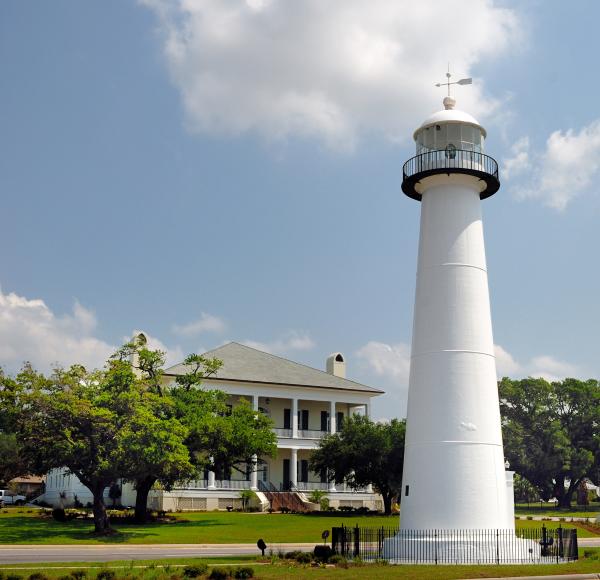
Explore the cultural influences of Biloxi at the historical exhibit. It features information about the Biloxi Wade-Ins, which occurred in the late 1950s into the early 1960s. A historical marker is located across the street nearby the Biloxi Lighthouse, detailing the events and celebrating the bravery of local physician Dr. Gilbert Mason Sr., whom led the peaceful wade-ins.
Biloxi Wade-Ins Mural (Biloxi)
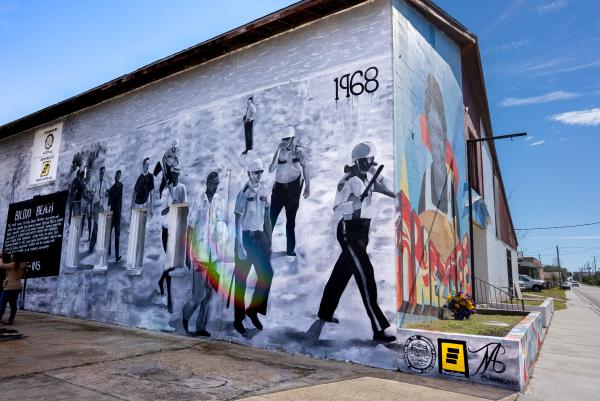
Another commemoration dedicated to the brave African Americans who participated in the Biloxi Beach Wade-ins can be found at the corner of Division St and Main St. The mural, unveiled on January 31, 2022, is the result of a collaboration between community activists, Biloxi NAACP, Steps Coalition, and artist Demetrius Gayden.
Pleasant Reed House (Biloxi)
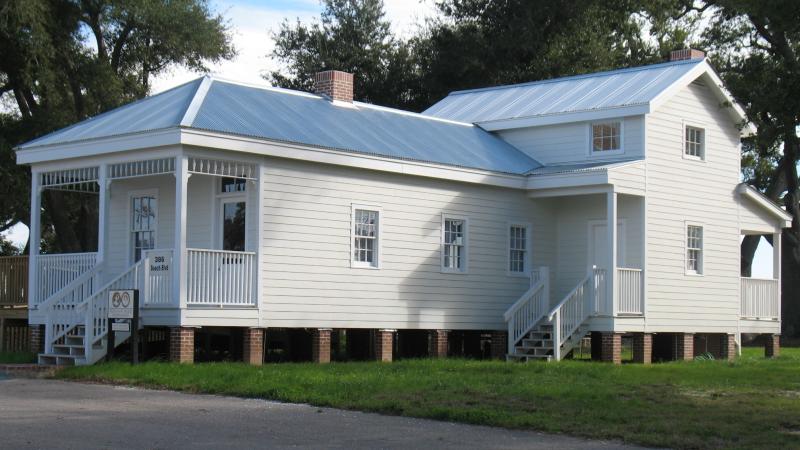
Learn from City Within a City: African American Culture in Biloxi – an exhibit located at the Ohr-O'Keefe Museum of Art in the Pleasant Reed Interpretive Center. This exhibition highlights the cultural history of the vibrant, segregated “city within a city” of Biloxi, Mississippi during the post-WWII years.
Mississippi Aviation Heritage Museum (Gulfport)
Discover the story of John C. Robinson at the Mississippi Aviation Heritage Museum in Gulfport. Robinson, a pioneering Black aviator who grew up in Gulfport, left Coastal Mississippi to command the Ethiopian Air Force. He later returned to America to help lay the groundwork for what became the Tuskegee Airmen
St. Rose de Lima Church (Bay St. Louis)
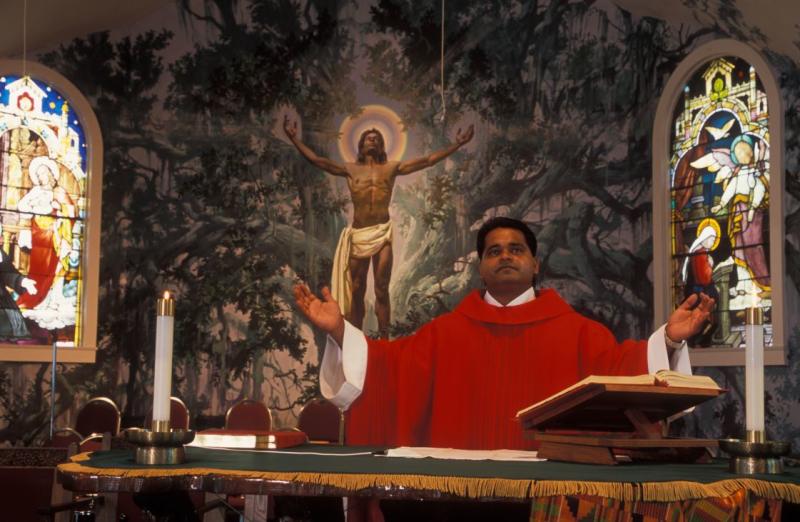
The St. Rose de Lima Church and school have a century-old, interrelated history. In 1868, the first school in Bay St. Louis for African Americans opened with 24 children in attendance. It was a two-story building, originally located on Second Street. On August 28, 1925, the school became St. Rose de Lima Church. To this day, it is still an extremely active church and parish. It is also home to one of the best Southern Gospel Choirs in the country. Its altar features an extraordinary mural of an African Christ figure rising before a live oak tree. Tours are available by appointment only, click here for more information.
100 Men Hall (Bay St. Louis)
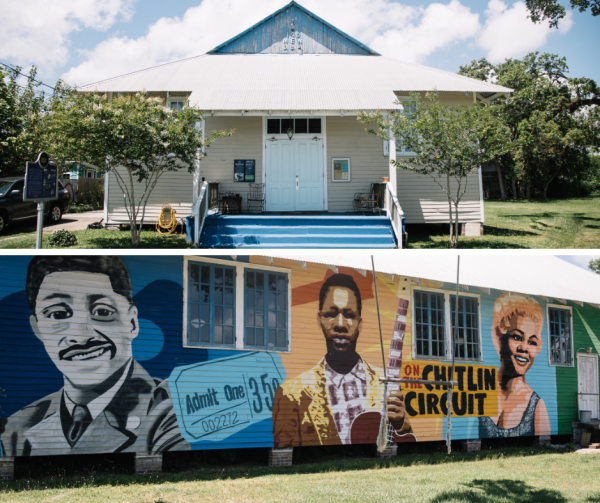
Also a stop on the Mississippi Blues Trail, the 100 Men D.B.A. Hall is a longtime center of African American social life and entertainment. It was built in 1922 by the One Hundred Members’ Debating Benevolent Association whom, over the years, sponsored many events. They also rented the hall to promoters who brought in blues, rhythm & blues, and jazz acts. Local residents have recalled performances by Etta James, Big Joe Turner, Guitar Slim, Irma Thomas, Professor Longhair, Ernie K-Doe, Deacon John, Earl King, and numerous others here.
Martin Luther King Jr. Park (Bay St. Louis)

Bay St. Louis is also home to the Martin Luther King, Jr. Park. The park is open to the public during daylight hours and features beautiful murals by local artists. Featured in the murals are the late Martin Luther King Jr. and John Lewis – two icons of the civil rights movement.
Phoenix Naval Stores (Gulfport)
9439 Creosote Rd, Gulfport, MS 39503
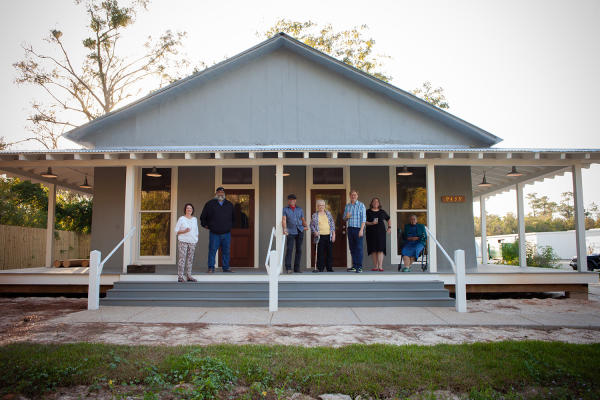
Once the site of a major sap processing plant, Phoenix Naval Stores was largely staffed by African Americans from the Turkey Creek community in the early 1900s. This community was a historically independent African American settlement located north of Gulfport. However, after a fatal accident that killed 11 men in 1943 and closure in 1958, the building was abandoned.
Community activist Derrick Evans purchased the Phoenix Naval Co Office in 2004 to prevent its demolition and to preserve the culture of the Turkey Creek community. In 2015, the Phoenix Naval Stores was listed individually on the 10 Most Endangered Places list by the Mississippi Heritage Trust, and rehabilitation and research on the building began with the help of Bay St. Louis-based architecture firm, unabridged Architecture. Now, the Phoenix Naval Stores serves as a community history center and archive for Coastal Mississippi’s African American forest industry workers in Turkey Creek.
Historical Markers
Visit the marker celebrating Dr. Felix Henry Dunn, African American physician who lived and practiced medicine in Gulfport from 1953 until 2002. He was president of the Gulfport Branch NAACP and marched with Dr. Martin Luther King, Jr. A champion of public housing and Head Start centers, Dr. Dunn was the first African American to serve on the Harrison County Development Commission.
Stop by one or all eight Blues Trail markers in Coastal Mississippi:
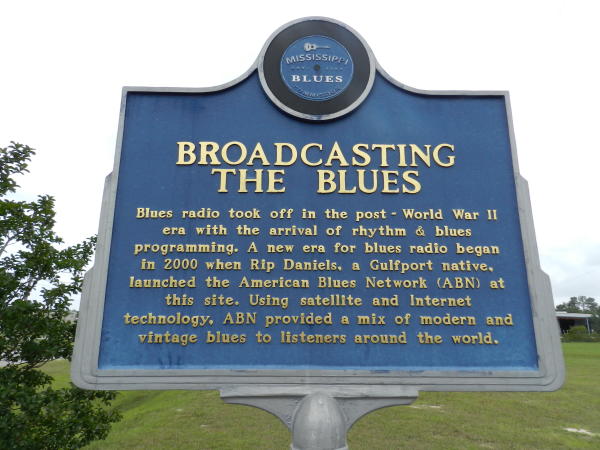
The Mississippi Blues Trail - Biloxi Blues - Historical marker celebrates the dozens of clubs and cafes in Biloxi that rocked to the sounds of blues, jazz, and rhythm & blues.
Mississippi Blues Trail - Blues & Jazz - The histories of blues and jazz are often traced along separate pathways, but, especially on the Gulf Coast, the two genres were intertwined from the earliest days. Blues was a key element in the music of Pass Christian’s illustrious native son Captain John Handy (1900-1971) and other locals who played traditional jazz or rhythm & blues. Pass Christian has celebrated its rich African American musical heritage with various festivals, including "Jazz in the Pass," first held here in 1999.
The Mississippi Blues Trail - Blues Hall - The 100 Men D.B.A. Hall, a longtime center of African American social life and entertainment, was built in 1922 by the One Hundred Members’ Debating Benevolent Association. Over the years the association sponsored many events and also rented the hall to promoters who brought in blues, rhythm & blues, and jazz acts. Local residents have recalled performances by Etta James, Big Joe Turner, Guitar Slim, Irma Thomas, Professor Longhair, Ernie K-Doe, Deacon John, Earl King, and numerous others here. Events are held at the Hall year-round - check out the calendar here!
The Mississippi Blues Trail - Broadcasting the Blues - When radio veteran and blues promoter Stan “Rip” Daniels launched WJZD radio in Gulfport on March 20, 1994, it became the first African American-owned FM station on the Mississippi Gulf Coast. According to the 2007 Broadcasting & Cable Yearbook, Mississippi had more stations (thirteen) regularly broadcasting under a blues format than any other state. In addition, specialized blues programs have been aired on various college, public, rock, oldies, and urban contemporary stations. Daniels took the blues concept a step further on October 1, 2000, when the American Blues Network transmitted its first satellite signals from the WJZD studios. Adopting a primary format of “party blues and oldies,” the ABN secured affiliations with dozens of stations across the country and put its programs on the internet as well. Daniels’s concert promotions also ensured support of the blues and southern soul performers on the Gulf Coast “chitlin’ circuit.”
The Mississippi Blues Trail - Gulfport Boogie - Gulfport was once home to an active rhythm & blues scene, particularly here in the North Gulfport area. Jaimoe, famed drummer with the Allman Brothers Band, was raised in Gulfport, as was the band’s onetime bassist Lamar Williams, and both performed in many clubs along the coast during their early years. Blues Hall of Fame pianist Roosevelt Sykes once lived here, and other Gulfport residents have included pianist Cozy Corley, singer Albennie Jones, and guitarist Blind Roosevelt Graves.
The Mississippi Blues Trail - Moss Point Blues - Moss Point was a center of African American music as far back as 1898. Known Moss Point residents to play nationally (many graduates of Magnolia High School) include O.J. “Boss” Tatum, Lamar (“Buck”) Tatum, Elijah (“Prof") Tatum, Romie Nelson, Charles Fairley, Charles Polk, Clyde Needham, Reuben Betts.
The Mississippi Gulf Coast Blues & Heritage Festival is part of the Mississippi Blues Trail. Since 1991 this festival has featured southern soul, blues, zydeco and gospel acts. Mississippi blues and soul headliners have included Bobby Rush, Theodis Ealey, O.B. Buchana and Nathaniel Kimble.
The Mississippi Blues Trail - Ocean Springs Blues - Notable African-American musicians born in Ocean Springs include Jaimoe (Johnnie Lee Johnson), a founding member of the Allman Brothers band. In 1995, Jaimoe and the other founding members of the Allman Brothers Band were inducted into the Rock and Roll Hall of Fame. In 2017, Jaimoe received the Lifetime Achievement Award in the Arts, from Mississippi. Henry Donahue, an accomplished guitarist and bandleader. Pianist Tempy Smith and her multi-talented children, who were renowned in the 1920s on the coast and later in New York City.




